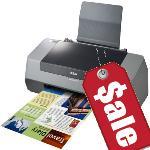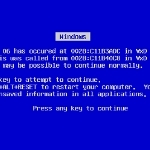
By Windows Talk
5 Ways Thieves Steal Your Info Online
Surfing the internet is as common as walking across the street today. There are people out to steal your information and use it for anything they think they can get away with. In the “old days,” thieves stole trash to obtain cancelled checks. They would copy the signature and then wash the ink off the paper. A quick forgery, the check was used, and you were out of money.
Today, thieves are online as well as in public. They’re surfing the internet for your information, looking for vulnerabilities. Thieves open credit card accounts in your name, make purchases to the limit, and leave you holding the bag. Your credit history is destroyed. It can take up to five years or more to restore your name and credit. Stories abound about good people losing their homes, jobs, credit ratings and more because of thieves. Here are five ways thieves can get their hands on your information.
#1 Phishing
This is one of the most common ways that thieves obtain your information. You receive an email from your financial institution stating that your account is in dire trouble. Your information needs to be verified. The email contains a link that you are told to click on and enter your sensitive data. The problem is that the email is a fake. You have been directed to a site that you hand your information over to willingly. Look at the email address that sent you the notice. If it looks strange, it is most likely a phishing site. Report it to your financial institution. Always open a separate tab or window and access your accounts directly; never do it through an email.
#2 Skimmers
A skimmer is a device that records information from credit cards. They can be as small as an ice cube. Some skimmers are designed to be attached to ATMs or even the front of a gas pump. The person with the skimmer sells your information to other thieves who take cash advances, open credit cards, and buy items using your identitifying information. The best way to protect your card is never to let it get out of your sight. Do not give your card to a waitress or waiter who will take it to a cash register and bring it back. Take it to the register yourself and watch the card being run. Look closely at ATM and other machine you are going to use. If it looks “strange,” use another machine.
#3 Malware
These nefarious programs can be attached to an innocent email or even legitimate sites. These programs record every keystroke you make on your computer. When you enter your sensitive information, the thief is recording it. Running antivirus and antimalware programs on a regular basis will identify and remove them from your system. Watch your bank statements like a hawk; never assume your information is safe online.
Shared with permission from Windows Talk.




